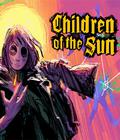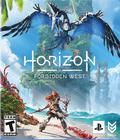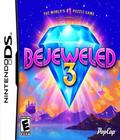It may not have been the first match-three puzzle game ever made, but Bejeweled is certainly one of the most popular ones. Debuting on the PC as nothing more than a Web browser game, it completely captured the attention of puzzle game fanatics as well as those who would have never even considered themselves to be casual gamers. Bejeweled 2 magnified what the original had started and made PopCap games a force to be reckoned with as the game made it to just about every mobile device, portable console, PC, and current-generation console with the exception of the Nintendo Wii. After some side trips with Twist and Blitz, PopCap brought out a proper sequel to the game in the form of Bejeweled 3, this time to the Nintendo DS. As expected, this is a keeper.
For the few who may never have played a game like this before, here's a brief recap. You're presented with a board and the opportunity to swap the places of two adjacent gems. Gems disappear once three of them match either horizontally or vertically, and each move must always result in a match. Once gems are matched, others fall in to take their place, with the possibility of creating combo matches along the way. While matching three gems simply makes them disappear, bonus items appear once more matches are made. A four-gem match, for example, creates a gem that explodes when matched while a five-gem match creates a hypercube that eliminates all of the gems of a particular color on the board. Matching gems in an L shape creates a gem that eliminates all of the gems in its row and column when matched.
The game comes equipped with eight different game modes, four of which are locked away until you play the other unlocked modes first. The good news is that, unlike Bejeweled 2, it's rather easy to unlock the new modes, so players of any skill level should easily be able to unlock everything in less than an hour. While that may sound like a condemnation of the game, rest assured that there is enough depth to the title that unlocking everything doesn't mean you've reached the end.
The first mode you encounter is the familiar Classic. Creating matches fills up a meter on the side, and every subsequent meter fill propels you to the next level. While you can take your time to plan out your moves and create potential combos, the game will end if you reach a state where no more matches can be made.
Zen mode takes the same formula presented in Classic but rips away all possibility of failure. Every move always creates another potential match, so there is no opportunity to fail. The meter is still present, though, and the only reward for finishing levels in this mode is a more elaborate sculpture that forms on the top screen as you progress.
Lightning is the game's version of a time attack mode. Here, the meter is replaced with a timer that ticks down. You can still create normal matches, but matching up four or more gems, creating combos, and matching up timer gems adds more time on the clock. Once time runs out, any unused special gems detonate, giving you one last chance to score points before a final tally is tabulated.
Diamond Mine, one of the unlockable modes, plays out differently from most puzzle games. Here, you aren't worried so much about the top of the screen as you are about the bottom. Matches made at the bottom of the screen clear out the ground below it, and it is your job to make sure that, once the timer expires, the ground below the fail line doesn't get pushed beyond that line. It is a fun and interesting premise since it makes you focus on one particular area of the board, and the timer adds to the tension.
Ice Storm, another unlockable mode, tries to throw some strategy into the fray. Several columns of ice rise up from the ground, and it's your job to ensure that they are kept in check. To do this, any gems you match are responsible for making the columns retreat. While the mode might encourage quick matches to keep things at bay, it actually goes more for strategy since you'll want to save up a match or two and use them when the columns get really out of hand. The game ends once any of the ice columns makes it to the top of the board and solidifies.
Butterflies is slightly sinister in its premise. At the top of the screen lies a spider while the playfield is filled with both gems and butterflies. The butterflies climb up one row after every move, and it is your job to match them up like regular gems to capture them. The game ends once a butterfly flies past the playfield and gets eaten by the spider. While the automatic upward travel of the butterfly make things tougher than usual, there is a reprieve in the fact that the butterflies can inadvertently make matches on their own by simply flying into the right set of gems.
Poker is a fun but rather unusual mode. Here, all of your matches are the equivalent of standard playing cards, and it's up to you to make matches that, when translated into cards, makes for a standard winning poker hand. For example, matching up the purple gems four out of five times makes for a four of a kind, while two orange gem matches and three purple ones make for a full house. Combos don't count toward getting you extra cards, but at least you can rest assured that one won't accidentally mess up your hand. Making bonus gems ensures that your hand gets bonus points when formed, so the standard Bejeweled rules aren't completely forsaken here. There is no time limit for the game, and you'll score points even if your hand has no matches in it, but the game ends once a skull card is created.
Finally, there's Quest, a mode that is unlocked at the beginning but provides the most depth out of everything else. You're presented with five different relics that are split into eight different pieces each. In order to get the eight pieces to form the relic, you have to complete various challenges. Some of them are simply variations of existing game modes, such as trying to capture 15 butterflies in 30 minutes or hitting a point threshold in poker. Others are more unique, such as trying to make 80 gems disappear before the playfield fills up or uncovering items hidden beneath the field or turning every tile gold in two minutes. This adds some life to the game, but with only 40 total challenges, there is no incentive to come back to this mode once you've finished everything.
With the exception of Quest, none of the featured modes have any ending. All you're trying to do is score the most points possible with the parameters set forth by each game mode. That's been done by other match-three puzzle games before, but for some reason, the Bejeweled series has always made you want to come back for one more attempt in the hopes that you'll do much better this time. It is hard to pin down exactly what it is that makes people come back, but whatever it is, it makes the game highly addictive.
Beyond the eight game modes, there are a few other things you can check out. There's a leaderboard, where you can check out everyone's high scores for every mode, with the exception of Zen and Quest. Stats provides you with some analysis of your performance, including total play time, number of special gems created, and highest-scoring move. It also provides you with an RPG-like experience meter that is nice, even if it ultimately doesn't do much for the game. Finally, there are badges that are similar to the Achievement system on the Xbox 360 version in that you're given said badges once you accomplish certain feats. There are 15 different badges to earn, including five special elite badges. The badge system has some depth, since the initial 15 badges have their own ranks of bronze, silver, gold and platinum, making for 65 total badges to earn. Like the Achievement system, badges ultimately do nothing for you in the game, but as we've seen before, they are a good incentive to play the various game modes.
The controls for Bejeweled 3 on the NDS may prove to be the best yet. Like the console versions, you can use the d-pad and face buttons to manipulate the game, and they don't perform any better or worse than those versions. People will most likely use the touch-screen, which provides a good amount of precision and speed. With the response time being very quick compared to the prequel on the system, touch might be the best way to control the game.
Despite the lower resolution of the screen, the game sports some pretty good graphics for the title. Though the gems are actually 3-D objects instead of sprites, they don't carry the same jagged edges that most polygon games demonstrate on the system. They also appear clearly, so you can easily see the details on things like the butterflies and bomb gems. The backgrounds used on the upper screen come in at a decent resolution, and with the game still maintaining a good frame rate even when special gems are exploding everywhere, there's not much to criticize in this regard.
The sound is also quite impressive. The same sound effects and voices from the previous games are used here, but the deep bass of the announcer and gem explosions don't seem to be hampered by the system's speakers. The music still takes on the sci-fi theme presented by the second game, but with a more adventurous tone that somehow goes well with the puzzle action. Like the effects and voices, the musical score provides a good balance; it sounds rich but not to the point of overpowering the speakers.
There is only one complaint that can be levied against the title, and it happens to be the same one that plagued the PC version. While the game features local leaderboards, there are no online leaderboards to access. Despite the system being online capable, there's no way to know how you're performing compared to every other Nintendo DS player in this game. In truth, it is a smaller complaint compared to the PC version since the computer is better equipped to handle persistent online play, but it was featured in the Xbox 360 and PS3 versions and would've been nice to have here, too.
Bejeweled 3 proves that the series is still the best when it comes to the match-three puzzle genre. The modes come with plenty of variety, and a few provide the right amount of challenge without becoming frustrating. The graphics and sound are great, but the responsive controls remain a standout. Yet it is really that unquantifiable factor, that unknown element, that drives players to keep playing Bejeweled 3 longer than similar games. Puzzle fanatics need no convincing. If you've gone on this long without playing something like this, then Bejeweled 3 is the recommended way to get familiar with the genre.
Score: 9.0/10
More articles about Bejeweled 3











 Featuring a wealth of new content and triple the fun of previous installments in the series, Bejeweled 3 elevates the "match-3" category of puzzle games to a new level.
Featuring a wealth of new content and triple the fun of previous installments in the series, Bejeweled 3 elevates the "match-3" category of puzzle games to a new level.